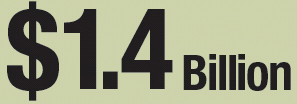Tremendous strides have been made and millions of dollars have been raised, but there is still so much to be learned about the prevention and treatment of breast cancer. A recurring theme is the not-quite-so clear-cut relationship between alcohol and breast cancer risk. It’s a sensitive and important topic that I have been following for years, beginning with my research for Age Gets Better with Wine.
I think most studies get it wrong.
There’s no shortage of epidemiologic studies finding an association of drinking and breast cancer. Taken together, they correlate a drink per day to increased odds of 10%, meaning heavy drinkers up their lifetime risk for breast cancer to 12% or so from around 9%. While this is not necessarily enough to scare women away from a glass of wine with dinner, it’s not something to ignore. (Plus, it makes for sensational press.)
Not all studies agree. For example, one large multicenter analysis, titled “No Difference Between Red Wine or White Wine Consumption and Breast Cancer Risk,” seems to imply that both types are equally risky. By contrast, the study really found that, “wine consumption was not associated with risk of breast cancer.”
Even if we accept the data at face value, women are 10 times more likely to die from cardiovascular disease than cancer, and evidence clearly shows a benefit to moderate wine consumption in terms of heart health. Women wine drinkers outlive non-drinkers by an average of 5 years, have a higher quality of life, better cognitive function, and a lower incidence of degenerative diseases such as osteoporosis and its related hip fractures, and diabetes.
But what about breast cancer risk? It’s difficult to know due to inherent limitations in the way epidemiologic surveys are done. By necessity, they rely on self-reported diet and drinking preferences; they do not measure actual drinking habits, so even the largest and longest prospective studies are subject to under-reporting bias about drinking. This can result in erroneously extrapolating heavy drinking risk to moderate drinkers.
Even when massaging the statistics to account for this, sorting out the specific associations to wine is next to impossible. Here’s why: Very few women in modern society drink wine daily, never varying from the type of wine and rarely drinking too much. We know from other studies on healthy drinking that it isn’t the weekly average that counts, it’s a pattern of daily wine with dinner. If you are trying to parse out the risk (or benefit) attributable to, say, two daily glasses of red wine, and you filter out those who don’t drink on weeknights, sometimes substitute white wine, or sometimes have cocktails with friends, your sample size evaporates.
It would be impossible, not to mention unethical, to design a study in which a large population of women was assigned abstinence or a specific type of wine or other alcohol, and enforce this over many years while outcomes were tabulated. There are, however, still some parts of Europe where a traditional lifestyle including regular consumption of the local wine is practiced.
A 2008 study from Southern France analyzed such a population with a wine-centric lifestyle, and found decreased breast cancer incidence in moderate drinkers. This J-shaped pattern of lower risk with moderate consumption and increasing risk at high levels is a familiar one to epidemiologists studying wine and health.
Short-term intervention studies provide a plausible explanation. A recent study tracked serum hormone levels in women who were assigned a daily glass of red or white, and concluded that red wine was a nutritional aromatase inhibitor.
There are likely no one-size-fits-all answers, and moderate consumption of wine—red in particular—may confer some health benefits based on specific health profiles. It never hurts to remind an individual what moderate drinking actually entails—namely, up to one drink per day for women and up to two drinks per day for men—and a serving of wine comprises 5 fl oz, according to the National Institute on Alcohol Abuse and Alcoholism.
Rather than analyzing the possible alcohol-breast cancer connection to death, our efforts should focus on developing new treatments, raising awareness of post-mastectomy reconstruction, and furthering basic science. We need more projects like the erstwhile Cleavage Creek Winery. The late California winemaker Budge Brown founded this winery to raise breast cancer research funds after losing his wife of 48 years. He donated more than $90,000 before the winery closed. The money went directly to projects at institutions like the Fred Hutchinson Cancer Research Center and Bastyr Naturopathic University in Seattle.





